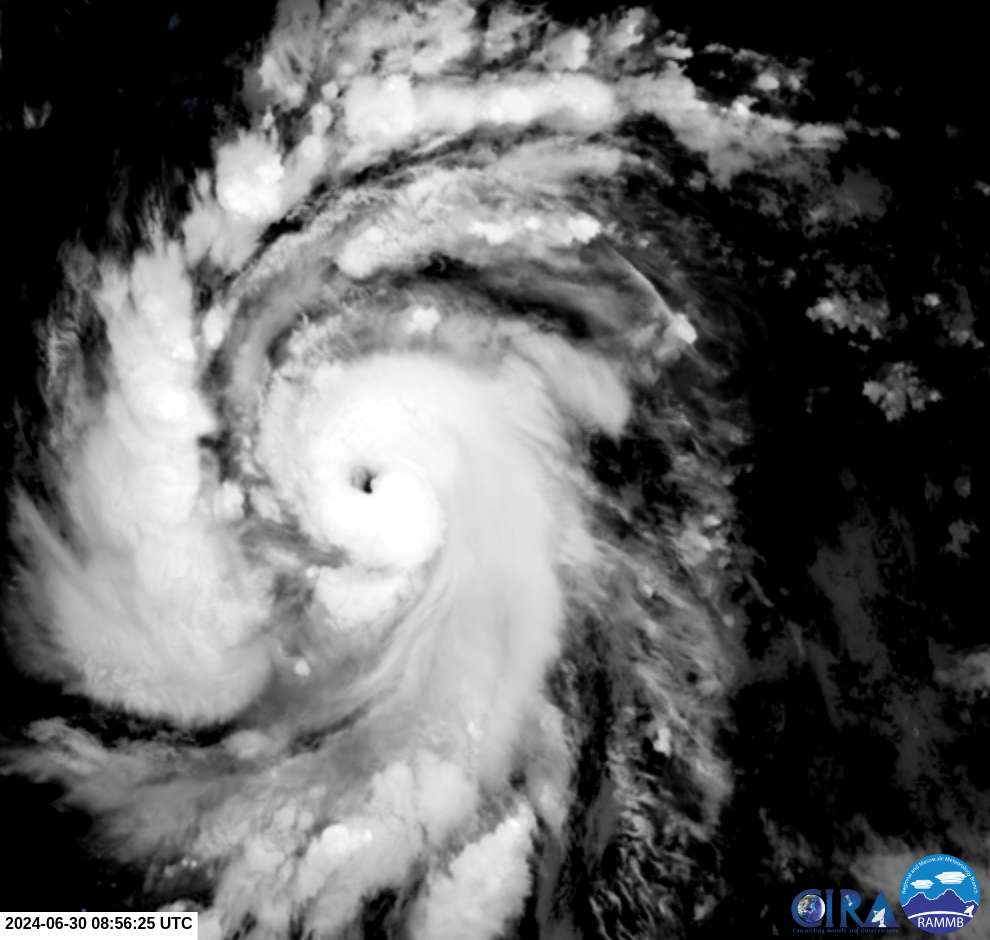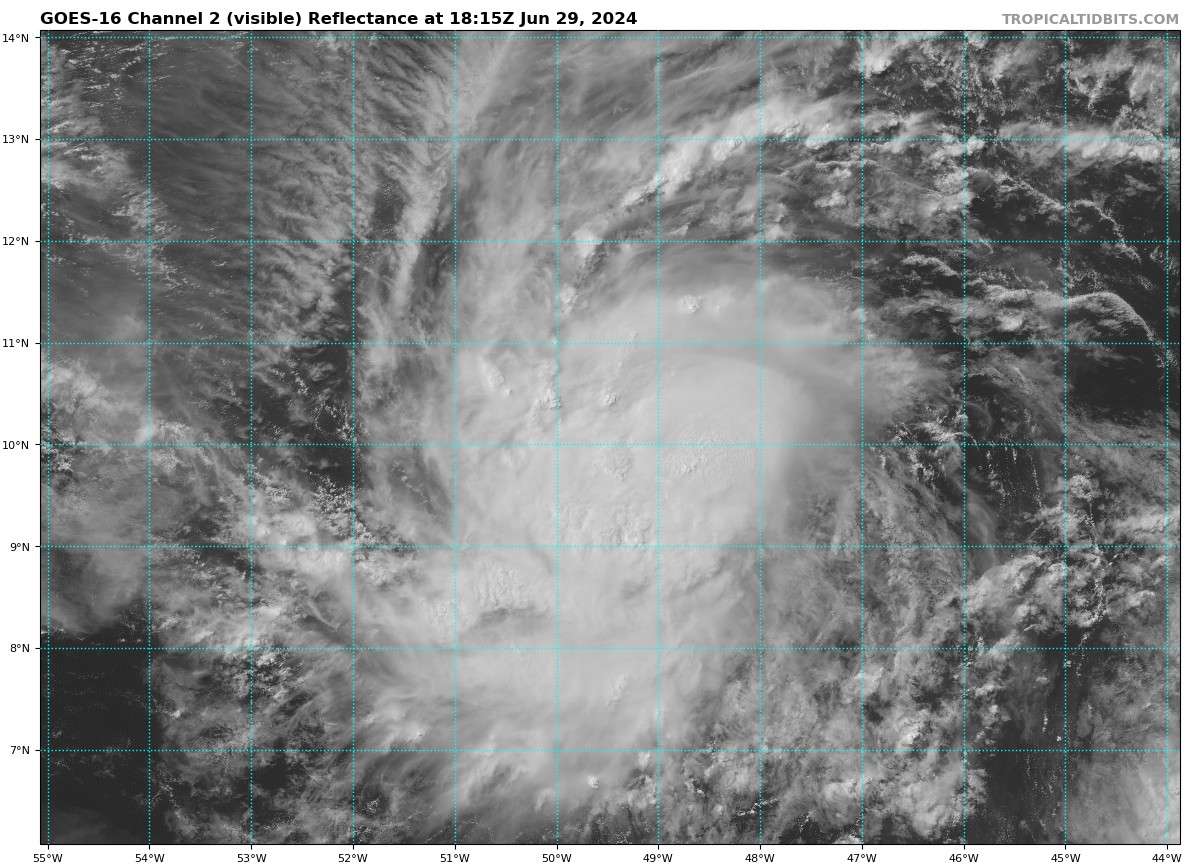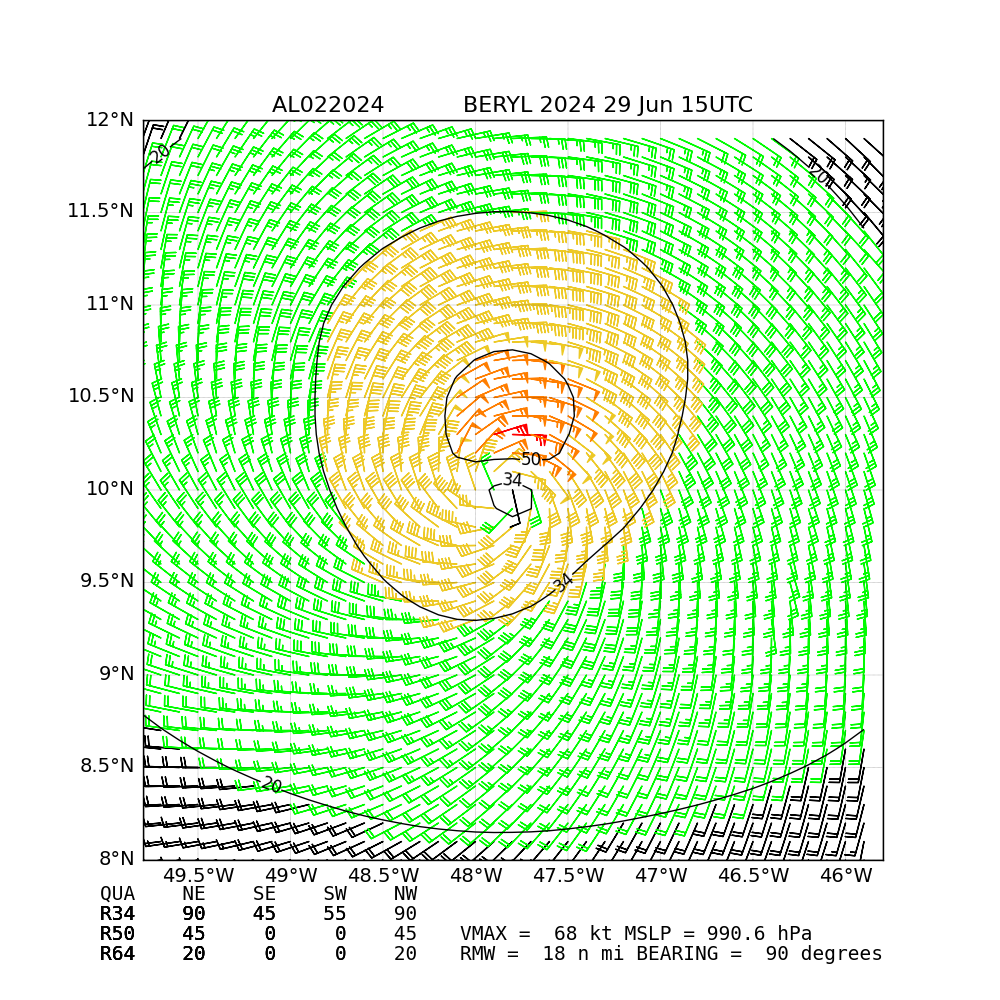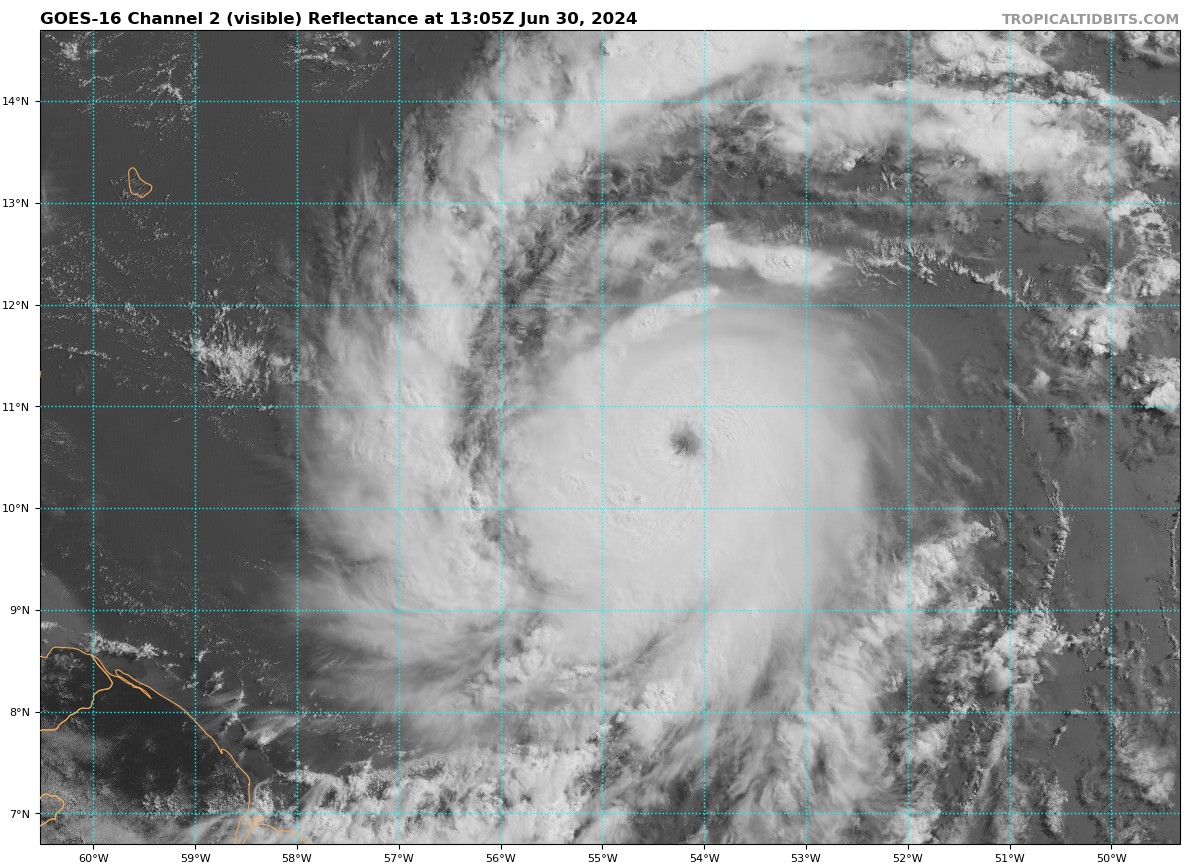
🏅 Top traders
| # | Name | Total profit |
|---|---|---|
| 1 | Ṁ390 | |
| 2 | Ṁ369 | |
| 3 | Ṁ325 | |
| 4 | Ṁ151 | |
| 5 | Ṁ39 |
People are also trading
Edit.v4: oblig. eye (CIRA geo-color - 2024-06-30-08:56Z)

As it's now a cat1, my final v4 probabilities (edit averaged two sets for different times):
CAT2: 10.8 %
CAT3: 37.5 %
CAT4: 45.8 %
CAT5: 5.9 %
Fix from TAFB 18Z puts it at Cat 1 strength:
AL, 02, 202406291800, 10, DVTS, CI, , 1000N, 4850W, , 3, 65, 2, 987, 2, DVRK, , , , , , , , , , , , , , L, TAFB, AL, VI, 5, 4040 /////, , , GOES16, CSC, T, 
It's notably higher than the objective dvorak and SATCON. I've only seen OSPO's (MTCSWA) from 15Z with similar max wind speeds:

No.
I wonder if there is any other market class (in terms of predictive questions) outside of Weather forecasting that has such an immense glut of publicly available, real time and historical data for which to practice making predictions while also having a 'good' amount of chances to make regular predictions. In short, it's good practice.
Too long and disorganized are my thoughts on this, but anecdotally the perceived benefits I got from sports was more in making fast updates and predictions, where as the weather was more to the slow, reflective updating. I think you do the first (the fast type) more often and the second type more rarely in terms of number of predictions (not effort/time spent). I don't which would be more valuable personally/professionally to people.
